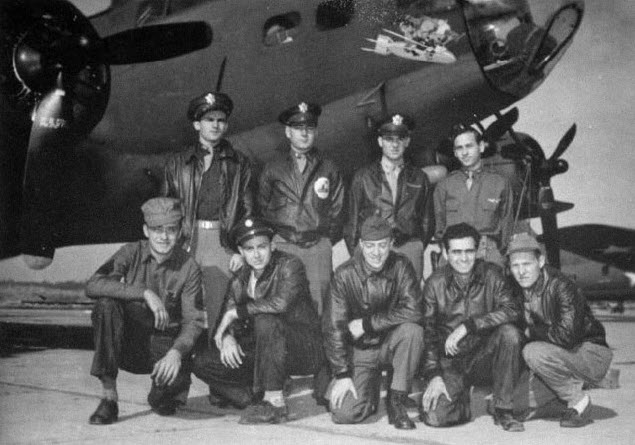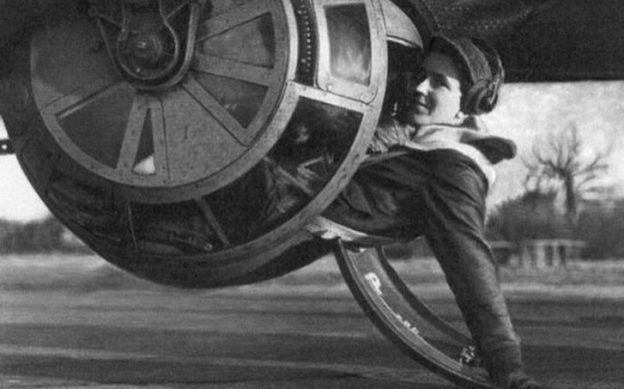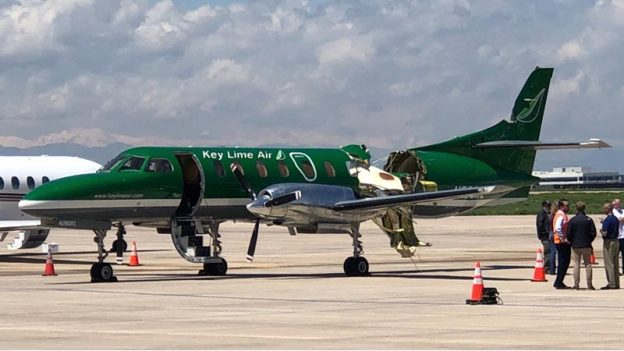Only three crew members of B-17F Flying Fortress “Snap! Crackle! Pop!” managed to bail out, one without a parachute. That was Alan E. Magee, who fell 20,000 feet, crashed through the glass and fell onto the steel girders of the St Nazaire train station. SSgt Alan E. Magee, belly gunner of the B-17F Flying Fortress 41-24620 “Snap! Crackle! Pop!”, 360th Bomber Squadron, 303rd Bomb Group, took off from Molesworth, Cambridgeshire, UK on a bombing mission over the “Flak City” of St Nazaire on Jan. 3, 1943. The target was a torpedo storage area near the submarine pens. Once over the target area, heavy flak and fighter attacks damaged the plane and started a fire on board. Only three crew members managed to bail out, one without a parachute. That was Magee, who fell 20,000 feet, crashed through the glass and fell onto the steel girders of the St Nazaire train station. He lived and kept all his limbs but was sent to Stalag 17B in Braunau, Gneikendorf. Magee’s obituary, available to read on American War Memorials Overseas, Inc., tells the incredible story of Magee;
The story of Alan E. Magee, the B-17 belly gunner who survived a 20,000-foot-fall without a parachute from his damaged Flying Fortress
No. At first, I didn’t believe it, either. Someone could survive after falling 20,000 feet from a plane without a parachute? And he was a San Angeloan? It sounds too wild to be true. I still have a lot of questions I’d like to ask, but after hours of research, I’m finally feeling sure enough about this incredible tale to share it with you. And at the end of my career, if someone asks me if there was anyone, I’m sorry I never got to interview for a story, I’ll tell them, sure, Staff Sgt. Alan Magee.
I found out about Sgt. Magee earlier this week in an e-mail from San Angeloan Chris Taylor. My sister in Ohio sent me this and thought I would forward it on to you, he wrote. The story told about Alan Eugene Magee, born Jan. 13, 1919, in Plainfield, N. J. Magee joined the Army Air Corps in 1941, after Pearl Harbor, and, because he was short and thin and could fit into small, cramped spaces, he became the ball turret gunner on a B-17 Flying Fortress. So far, so good.

I should detour here for a reminder that when you do research on the Internet, you take your chances. While all the stories I found about the sergeant include the same basic facts (he survived a 20,000-foot fall without a chute during a bombing mission over Saint Nazaire, France), details vary. Most of the accounts agree on these points: The Army Air Corps assigned him to a B-17 nicknamed Snap! Crackle! Pop! His seventh mission was a daylight bombing run over Saint Nazaire, France, on Jan. 3, 1943. During the mission, the bomber was hit. Magee was injured in the attack. The crippled plane began to fail. Somehow (accounts vary) Magee escaped from the plane. But without a parachute. (Some accounts say he forgot it in the confusion. Some say the chute was disabled by the enemy fire. Others claim he was thrown from the plane unconscious, or before he could put on the parachute.) He fell four miles. He fell through the glass roof of the Saint Nazaire railroad station. And survived. Some accounts theorize falling through the glass broke his fall. Others claim sliding along the sloped roof slowed him. One theory claims an explosion from a falling bomb occurred in the station at the same time Magee was dropping into it and the shock wave broke his fall. The TV show MythBusters even tested the theory during its fourth season but gave it a thumbs down. He was captured by the Germans, who treated his serious injuries (accounts of the wounds vary), and he became a prisoner of war. (Two crew members parachuted to safety. Seven others died in the crash.) Magee was liberated in May 1945 and received the Air Medal for meritorious conduct and the Purple Heart.
He worked in the airline industry, retired in 1979 and moved to northern New Mexico. He led a pretty good life; a friend once told a New Mexico reporter. He returned to Saint Nazaire with his wife, Helen, in 1993 or 1995 (accounts vary) for the dedication of a memorial plaque for the crew of his plane. At some point, the Magees moved to San Angelo. He died here. A short, simple death notice in the Standard-Times says that he died on Dec. 20, 2003, in a local hospital. It said there would be no services. Magee’s body was cremated and remains buried in Pioneer Memorial Park in Grape Creek, TX. His wife and a sister in Houston were listed as survivors. On the Internet, I found something Sgt. Magee was quoted as saying when he returned to France in the 1990s and saw the glass-roofed railroad station where he landed after falling from so far, so fast, so long ago. “I thought it was much smaller.”
For more information about war memorials honoring Americans overseas be sure to visit American War Memorials Overseas Inc. Source: ‚TheAviationGeekClub‚.





